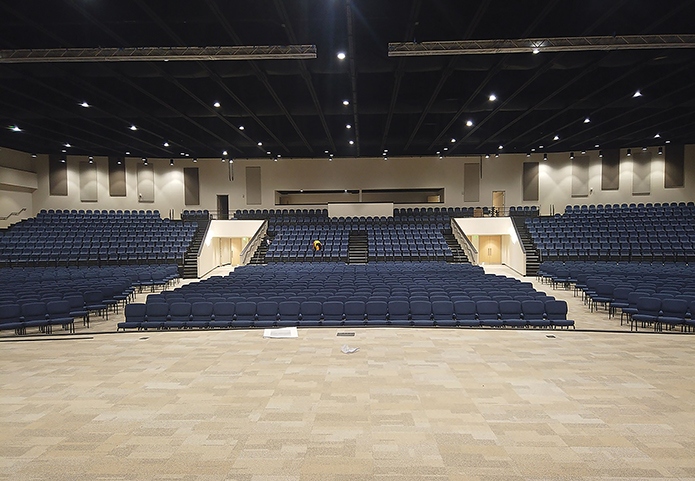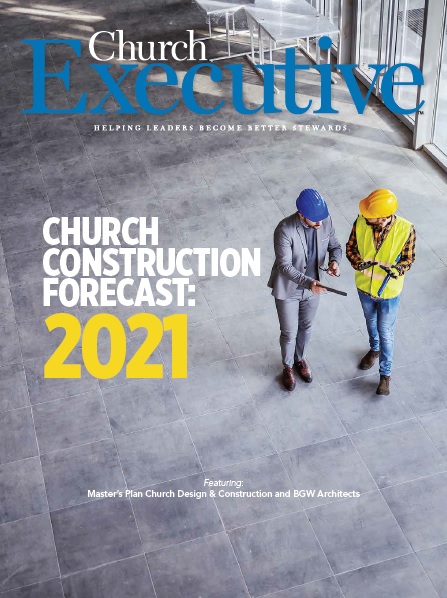
 As an architecture firm that works almost exclusively with churches and Christian schools, we must confess to allowing our collective joy to slip away every now and again during this rollercoaster ride of 2020.
As an architecture firm that works almost exclusively with churches and Christian schools, we must confess to allowing our collective joy to slip away every now and again during this rollercoaster ride of 2020.

With 129 faith-based projects in active design or construction stages, we have walked along this path of uncertainty with many church leaders this year, offering our best counsel on how to move forward with sound stewardship.
So, what have we learned from 2020 that we can apply heading into 2021?
While we know that the ways in which churches will minister to their communities are changing — perhaps in ways that will be permanent — we firmly believe (and have seen) that faithful followers of God will not pull back on their charge to be ministers of the gospel. The church will prevail.
In addition to the immediate impacts on church facilities in the areas of occupant density, indoor air quality and high-touch children’s spaces (which we recently addressed in a whitepaper), we believe two key trends for church facility expansion will gain traction in 2021 and beyond.
#1: Repurposing commercial buildings
Fueled by the changing spending habits of U.S. consumers and the growth of e-commerce, there has been a growing trend of retail brands closing their brick-and-mortar locations over the past 10 years. Due to the economic impact of COVID-19, this trend has been greatly accelerated in 2020. A record 9,500 stores went out of business in 2019. That seemed massive — but as many as 25,000 are estimated to have shut down permanently in 2020, according to Coresight Research.
The shift toward the use of unconventional buildings for worship has been underway for years, but with more large retail spaces becoming available than ever before, we expect this trend to become even more prevalent. As the real estate market becomes flooded with these types of properties, they will offer churches some potentially great bargains compared to ground-up construction.

For example, we recently completed the conversion of a Lowes Home Improvement Center for Light of Joy Church in Riverdale, Ga. Since the property had much of the infrastructure already in place — including the building envelope, utilities and parking — the facility was remodeled for a fraction of the cost of constructing a new building on vacant land. It also offers the church great visibility in a high-traffic area with accessibility from major roads.
We have completed a number of similar projects in recent years that involved the conversion of grocery stores, commercial office buildings, industrial facilities, and even auto dealerships.
There are a number of potential hurdles in remodeling these types of buildings, as zoning and building codes can dictate how the property can be used and are sometimes difficult to change. Based on our experience, there are five keys to consider in the conversion of retail and commercial buildings for worship. Learn what they are.
#2: Financially sustainable church buildings

We also believe that this uncertain time calls for a paradigm shift in how churches view their land and buildings. Church facilities have traditionally been among the most underused facilities in America, sitting empty throughout most of the week. We believe there are incredible opportunities for ministries to leverage these assets to both generate sustainable income for the ministry and to serve the needs of the local community — not just on Sundays, but seven days a week.
In recent years, the idea of merging for-profit business on church property has become a hallmark of BGW projects. In many cases, these financially sustainable models can not only reduce existing overhead costs, but can also become a true catalyst for ministry growth and community impact.
While there are a number of possibilities for non-profit models in churches, child care centers have proven to be the most natural fit for many ministries. We currently have more than a dozen church projects in development that incorporate a for-profit child care business. We have partnered with two leading child care providers that are involved in the design process from the earliest stages, providing valuable input on space requirements and business feasibility, as well as professional management solutions that can help ensure the success of the church’s new business.
Another growth area we see is in the development of unused church property and adjacent land for other revenue-generating opportunities such as mixed-use retail, multi-family housing, commercial office / shared work space, or even senior housing. Learn how your church can use the existing assets of your church more effectively to create financial sustainability during uncertain times.
Don Mahoney is Principal Architect & President at BGW Architects in Ogden, Utah. Having earned numerous awards in his 38-year career, Mahoney specializes in helping ministries to cast their vision during the very earliest stages through creative master planning and preliminary design concepts.
He earned his master’s degree in Architecture from the University of Utah in 1982 and formerly served as President of the American Institute of Architects for the State of Utah.



Your content is very timely. This is very helpful not only to churches but also to the other establishments that hold many people. Thank you!